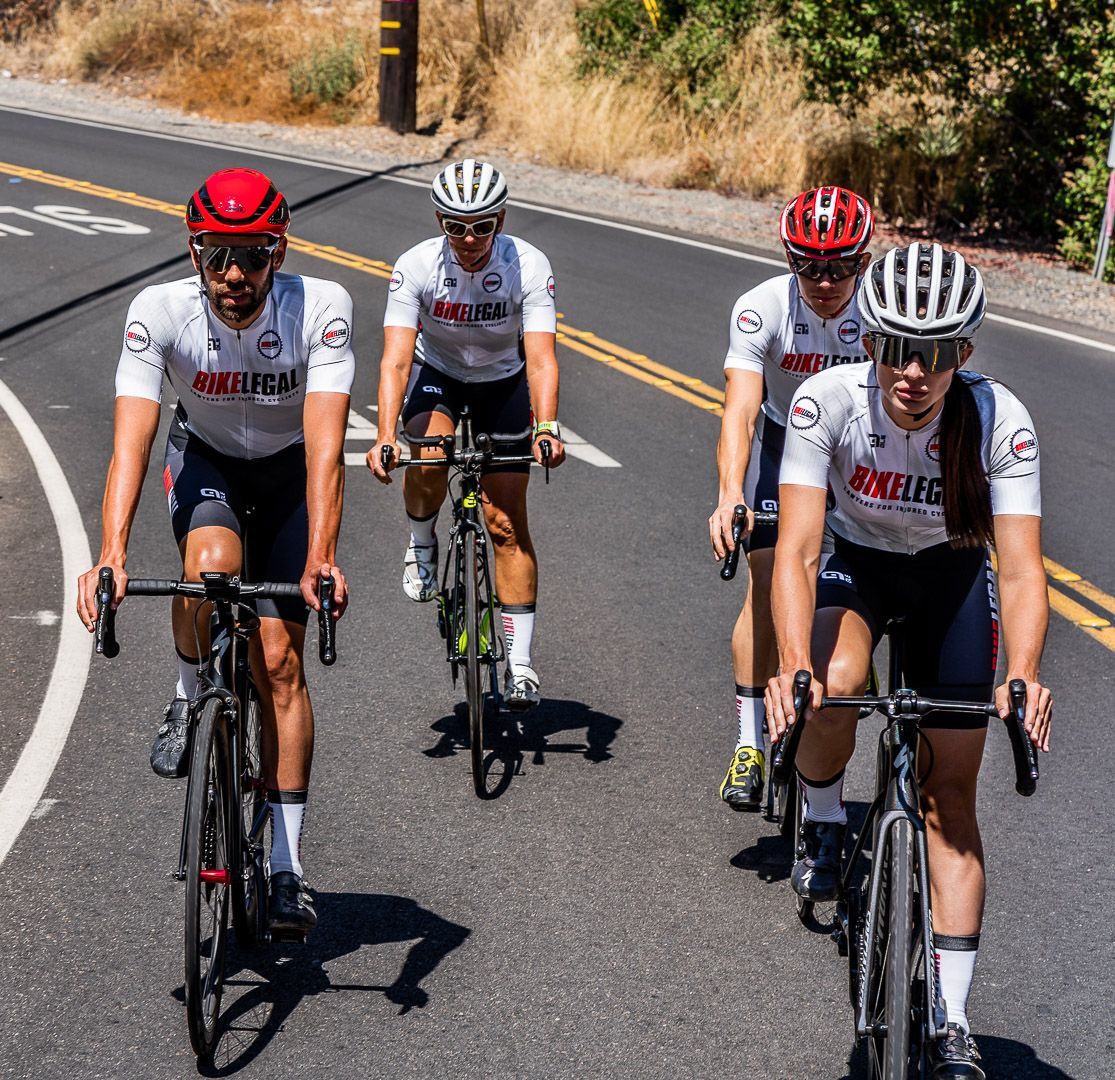Importance of Hand Signals for Cyclists
Follow us on
social media!
Importance of Hand Signals all Cyclists Should know
At Bike Legal, our skilled bicycle accident attorneys are enthusiastic about maintaining the safety and rights of cyclists. We know the tragic effects of cycling accidents and the significance of education-based prevention.
In this blog post, we'll examine the safety hand signals for cyclists, a straightforward but effective method. By becoming proficient with bike hand signals, you may dramatically increase your cycling safety and lower the likelihood of accidents. Continue reading to see why cycling routines must include this ability and how our devoted team at Bike Legal can support you in the event of a cycling accident.

Bikes can be driven without a license or permit, unlike motor vehicles. To ride around the city safely, it is crucial to understand the fundamentals of the traffic laws you must abide by and why bike hand signals are essential for you. Yes, cyclists use body language to communicate because of the absence of brake lights. Understanding the importance of learning signals as a cyclist is crucial for several reasons:
1. Communication with Motorists
Hand signals can be a powerful way for cyclists to communicate effectively with drivers. Clear and concise signaling provides drivers with crucial information, reducing the likelihood of misunderstandings and potential accidents. These signals facilitate anticipation of the cyclist's next move, allowing drivers to adjust their driving accordingly, thus preventing accidents.
2. Predictability
Bike hand signals serve to communicate your planned actions to others. They provide both motorists and pedestrians with ample time to respond accordingly. You can minimize the chances of abrupt maneuvers or unforeseen collisions by signaling your intentions to turn or change lanes ahead of time. These signals are vital in establishing a secure environment for everyone, as predictability is key for safety.
3. Visibility
Cycling Hand signals convey your intentions and make you more visible to other motorists. Cycling hand signals alert people to your presence, especially when visibility is limited, or you might be in someone’s blind spot. Making cyclists more visible can lessen the risk of accidents brought on by distracted driving.
4. Building Trust
Consistent bike hand signals promote trust and make the road safer for everyone. When drivers can see that you care about their safety and obey the law, it fosters a cooperative and polite environment. For accidents to be decreased, motorists and cyclists must trust one another.
Essential Cycling Hand Signals
Hand signals are essential communication tools for cyclists, allowing them to convey their intentions to other road users. These signals offer critical information regarding turns, stops, and other maneuvers, thus contributing to a safer cycling environment. Below are some fundamental hand signals for biking:
1. Left Turn Signal
Extend your left arm straight and parallel to the ground to signal a left turn. This action signals your intention to turn left. Ensure your left arm stays out until you've finished the turn if safe to do so. By mastering this signal, you can ensure other road users know your plan to change lanes or turn left.
2. Right Turn Signal
To take a right turn, extend your right arm straight, parallel to the ground, with your palm facing down. This motion indicates that you are planning for a right turn. Keep your arm extended until you have completed your right turn if safe to do so.
After completing the turn, return your arm to the handlebars and continue riding. Canceling the cycling hand signals is essential to avoid road hazards and confusion among other road users.
3. Stopping Signal
It is one of the most common hand signals. Extend your left arm downward, palm facing backward, to signal you are about to stop. This indicator alerts drivers behind you that you are slowing or about to stop. Understanding this signal is essential for avoiding rear-end crashes and increasing safety while slowing or stopping.
4. Slowing Hand Signal
The slowing hand signal is an easy-to-understand hand movement. Your left or right arm should be extended horizontally, palm facing down, and you should then slowly lower your hand to the ground.
You should use the slowing hand signal as a responsible cyclist to slow down when group riding. This could be necessary to keep pace with traffic, avoid dangerous road conditions, slow to prepare for a turn, improve visibility, or maintain a steady speed.
5. Road Hazard Signal
When participating in a group ride, to signal the existence of a manhole cover, pothole, drain cover, or another comparable road danger, use the manhole hand gesture.
Depending on which way the manhole or obstruction is facing, keep your left or right arm outstretched while keeping your palm downward. Hold your hand steadily and ensure other bicyclists behind you can see it.
Once you've extended your arm, point one finger toward the hazard. This additional gesture helps draw attention to the specific location of the hazard.
6. Assisting Vehicles to Pass
If you ride on narrow roads with a bike lane, you and another vehicle may need help to share the lane safely. If a vehicle is behind you and wants to pass, ride to the right as far as safe to do so, and if clear, assist the driver behind you by signaling that it is safe to pass. You can do this by extending your left arm and waving your hand and arm back and forth to signal the driver that it is safe to pass.
This maneuver helps improve traffic flow but also helps prevent a driver from getting angry and passing unsafely, which could increase your chances of being hit.
7. Shifting to Single-File Riding
Switching from riding two by two to a single-file line is necessary when the road narrows, or the bike lane ends. Signal this change by lifting your arm and raising one finger, indicating the need to form a single-file line with fellow cyclists.

What to Do After a Bicycle Accident?
At Bike Legal, our mission is far beyond the ordinary. We're committed to representing injured cyclists, fostering bicycle safety, and helping victims reclaim their lives after an accident. If you or a loved one has been hurt in a bicycle accident, our expert bicycle accident attorneys are ready and willing to provide the legal assistance you need.
Our primary focus? Your well-being and ensuring you receive the compensation you deserve. Don't leave your rights undefended - call us at 877-245-3534 for a complimentary consultation.
FAQs: Bicycle Hand Signals
Is Using Bike Hand Signals When Cycling Required By Law?
Although hand signals are not legally required in California, they are strongly encouraged because they increase the safety of everyone using and sharing the roads. Following these signals shows that you are committed to cycling responsibly and can give you legal protection in an accident.
What Should I Do If A Driver Ignores My Hand Signal and Turns?
Put your safety first when you encounter drivers who ignore your hand signals. Keep an eye on your surroundings, make eye contact with other drivers, and be ready to evade traffic if necessary. To make yourself more visible, consider adopting other safety precautions, including lighting and reflective clothes.
Can Hand Signals Prevent Every Bicycle Accident?
Although hand signals are essential for communication and accident avoidance, they cannot ensure safety. Lowering the dangers of cycling on the road, exercising caution, obeying all traffic regulations, and using defensive cycling practices are crucial.

